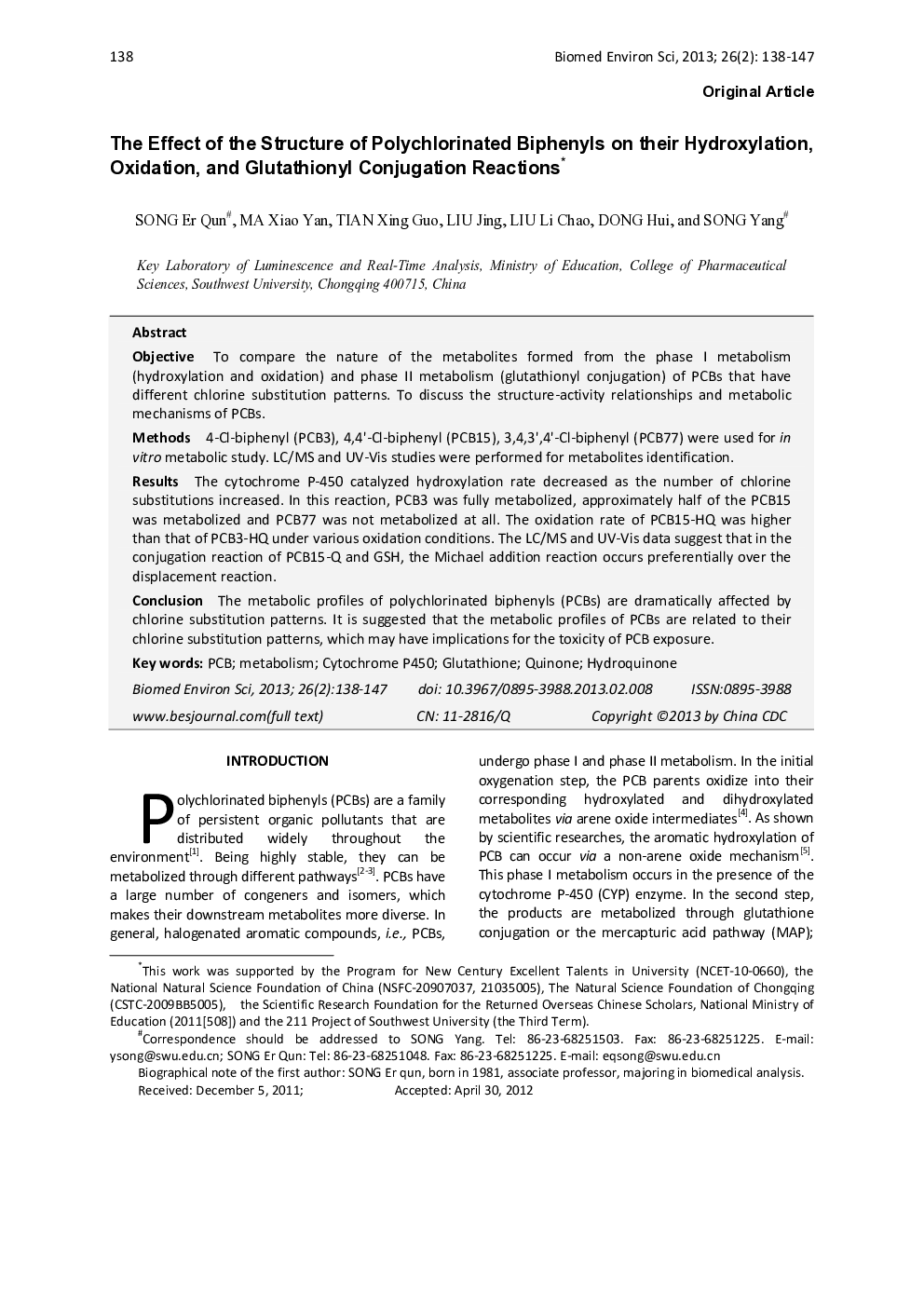| کد مقاله | کد نشریه | سال انتشار | مقاله انگلیسی | نسخه تمام متن |
|---|---|---|---|---|
| 4196333 | 1278675 | 2013 | 10 صفحه PDF | دانلود رایگان |

ObjectiveTo compare the nature of the metabolites formed from the phase I metabolism (hydroxylation and oxidation) and phase II metabolism (glutathionyl conjugation) of PCBs that have different chlorine substitution patterns. To discuss the structure-activity relationships and metabolic mechanisms of PCBs.Methods4-Cl-biphenyl (PCB3), 4,4'-Cl-biphenyl (PCB15), 3,4,3',4'-Cl-biphenyl (PCB77) were used for in vitro metabolic study. LC/MS and UV-Vis studies were performed for metabolites identification.ResultsThe cytochrome P-450 catalyzed hydroxylation rate decreased as the number of chlorine substitutions increased. In this reaction, PCB3 was fully metabolized, approximately half of the PCB15 was metabolized and PCB77 was not metabolized at all. The oxidation rate of PCB15-HQ was higher than that of PCB3-HQ under various oxidation conditions. The LC/MS and UV-Vis data suggest that in the conjugation reaction of PCB15-Q and GSH, the Michael addition reaction occurs preferentially over the displacement reaction.ConclusionThe metabolic profiles of polychlorinated biphenyls (PCBs) are dramatically affected by chlorine substitution patterns. It is suggested that the metabolic profiles of PCBs are related to their chlorine substitution patterns, which may have implications for the toxicity of PCB exposure.
Journal: Biomedical and Environmental Sciences - Volume 26, Issue 2, February 2013, Pages 138-147